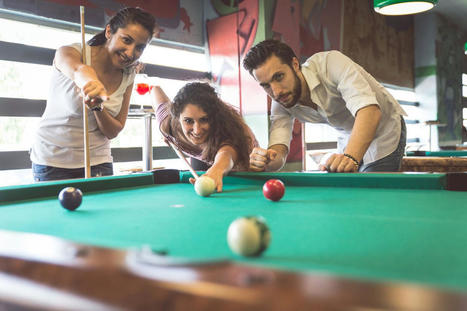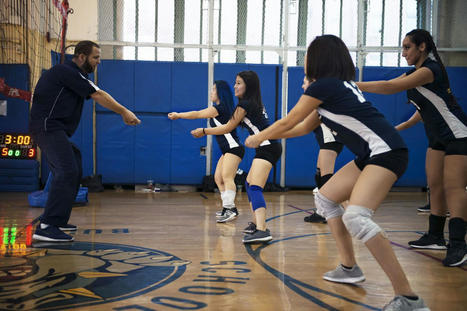Cue sports use a cue stick to strike billiard balls off and around a pool or equivalent table. The most common game is pool. Although these are not contact sports, various musculoskeletal injuries can manifest. Therefore, it is recommended to know the common injuries so that they can be self-treated or treatment can be sought before the condition worsens. Injury Medical Chiropractic and Functional Medicine Clinic can relieve symptoms, rehabilitate the body, and restore mobility and function.
Cue Sports Injuries
Sports medicine doctors say cue sports players suffer from sprains, strains, and fractures, among other injuries. Cue sports players are constantly:
- Bending
- Reaching
- Twisting
- Stretching their arms
- Using their hands and wrists
Performing these constant movements and motions for extended periods increases the risk of sustaining injuries. Common symptoms include:
- Inflammation
- Warmth or heat in affected areas
- Swelling
- Tightness in the affected areas
- Pain
- Decreased range of motion
Injuries
Back and Waist
The posturing can cause individuals to tense their muscles, increasing the likelihood of injury. With all the bending, waist and back injuries are common. Back issues include:
- Pinched nerves
- Sciatica
- Sprains
- Strains
- Herniated discs
Individuals with existing spine conditions or osteoarthritis have an increased risk of injury.
Shoulder, Arm, Wrist, Hand, and Finger
- The shoulders, hands, wrists, and fingers are in constant use.
- This can lead to overuse injuries affecting the muscles, tendons, ligaments, nerves, and bones.
- Consistent stress can lead to sprains, strains, or bursitis.
Tendonitis
- Tendonitis occurs when too much pressure is applied, causing tendons to inflame.
- This could lead to swelling and pain and could lead to long-term damage.
Foot and Ankle
- The feet can slip when stretching too far while setting up and taking a shot.
- This injury usually happens when trying to balance on one foot.
- Slipping can lead to a sprained ankle or something worse, like a torn ligament or fractured foot.
Chiropractic Care
Chiropractic adjustments combined with massage therapy and functional medicine can treat these injuries and conditions, relieving symptoms and restoring mobility and function. When the tendons, muscles, ligaments, and bones are properly aligned, recovery and rehabilitation progress faster. A chiropractor will also recommend stretching and exercise programs to help maintain the adjustments and prevent injuries.
Physical Therapy and Exercises
The information herein is not intended to replace a one-on-one relationship with a qualified healthcare professional or licensed physician and is not medical advice. We encourage you to make healthcare decisions based on your research and partnership with a qualified healthcare professional. Our information scope is limited to chiropractic, musculoskeletal, physical medicines, wellness, sensitive health issues, functional medicine articles, topics, and discussions. We provide and present clinical collaboration with specialists from a wide array of disciplines. Each specialist is governed by their professional scope of practice and their jurisdiction of licensure. We use functional health & wellness protocols to treat and support care for the injuries or disorders of the musculoskeletal system. Our videos, posts, topics, subjects, and insights cover clinical matters, issues, and topics that relate to and directly or indirectly support our clinical scope of practice.* Our office has reasonably attempted to provide supportive citations and identified the relevant research study or studies supporting our posts. We provide copies of supporting research studies available to regulatory boards and the public upon request.
We understand that we cover matters that require an additional explanation of how it may assist in a particular care plan or treatment protocol; therefore, to further discuss the subject matter above, don't hesitate to get in touch with Dr. Alex Jimenez or contact us at 915-850-0900.
Dr. Alex Jimenez DC, MSACP, CCST, IFMCP*, CIFM*, ATN*
email: coach@elpasofunctionalmedicine.com
Licensed in: Texas & New Mexico*
References
Garner, Michael J et al. "Chiropractic care of musculoskeletal disorders in a unique population within Canadian community health centers." Journal of manipulative and physiological therapeutics vol. 30,3 (2007): 165-70. doi:10.1016/j.jmpt.2007.01.009
Hestbaek, Lise, and Mette Jensen Stochkendahl. "The evidence base for chiropractic treatment of musculoskeletal conditions in children and adolescents: The emperor's new suit?." Chiropractic & osteopathy vol. 18 15. 2 Jun. 2010, doi:10.1186/1746-1340-18-15
Orloff, A S, and D Resnick. "Fatigue fracture of the distal part of the radius in a pool player." Injury vol. 17,6 (1986): 418-9. doi:10.1016/0020-1383(86)90088-4



 Your new post is loading...
Your new post is loading...









Injury Medical Chiropractic and Functional Medicine Clinic can treat cue sports injuries, relieve symptoms, and restore mobility and function. For answers to any questions you may have, please call Dr. Jimenez at 915-850-0900 or 915-412-6677